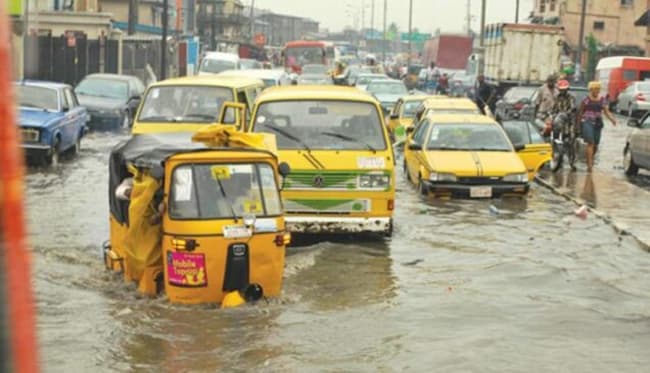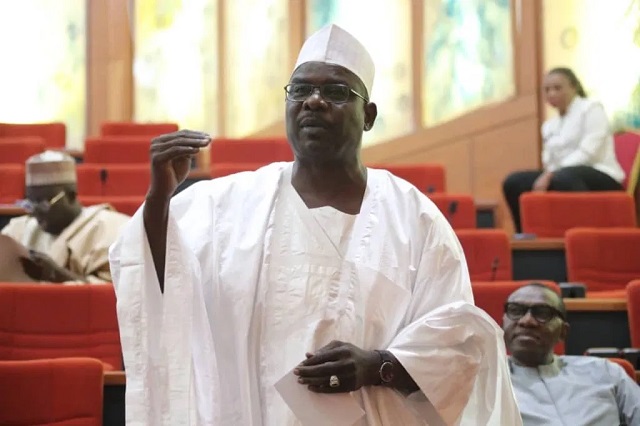Nigeria is on edge as the Federal Government has issued a stark warning of heavy flooding expected to impact 1,249 communities across 30 states and the Federal Capital Territory (FCT) between April and November 2025.
From riverine creeks in Bayelsa to urban flood zones in Lagos, thousands of families are preparing for what may become one of the country’s most challenging flood seasons in recent years.
The alarm was sounded on Thursday in Abuja by the Minister of Water Resources and Sanitation, Prof. Joseph Utsev, during the official unveiling of the 2025 Annual Flood Outlook by the Nigeria Hydrological Services Agency. The report outlines areas classified as high and moderate flood-risk zones, calling for urgent and coordinated action from federal, state, and local authorities.
“The 2025 outlook shows that 1,249 communities in 176 LGAs across 30 states and the FCT fall within the high-risk flood areas, while 2,187 communities in 293 LGAs fall within moderate risk,” Utsev disclosed.
Among the high-risk states are Kogi, Benue, Anambra, Delta, Bayelsa, Lagos, Ogun, Cross River, and Rivers, where a mix of river overflow, urban runoff, and rising sea levels poses triple threats to livelihoods, housing, and critical infrastructure.
A Human Crisis in the Making
For residents like Maimuna Sarki in Lafia, Nasarawa State, the annual rains bring more than just relief from the heat—they bring fear. “Each time the clouds gather, my children and I pack a few things in a nylon bag, just in case the river behind our home overflows again,” she said. “Last year, we lost our small farm. This year, we’re not even sure if we should plant.”
With memories of the devastating 2022 and 2023 floods still fresh—where entire communities were submerged and thousands displaced—states are now racing against time to avert another catastrophe.
States Take Action
In Anambra, the State Emergency Management Agency has begun clearing drainage systems and maintaining evacuation camps across ten flood-prone LGAs.
Kwara State has expanded the Asa River in Ilorin and ordered the dredging of waterways to protect residents, while Gombe attributes its flood-free record last year to timely de-silting of storm drains. The state has now re-engaged contractors to continue the work.
Delta State, through its Commissioner for Environment, Mr. Jamani Ejiro, stated that sensitisation began weeks before the federal announcement. “Before the rain comes, we’ve already opened our water channels and cleared the drains. We are on top of the situation,” he assured.
Bayelsa is also gearing up to clear major canals in Yenagoa before the rains peak in May, while Bauchi is focusing on rebuilding vulnerable bridges destroyed by previous floods.
Nasarawa, Borno, and Ogun have adopted a mix of relocation efforts, community awareness campaigns, and infrastructural upgrades. Ogun’s Commissioner for Environment, Ola Oresanya, said the state is working with the Ogun-Osun River Basin Authority to manage controlled water release during peak flooding.
Coastal States Face Dual Threat
For low-lying coastal states such as Lagos, Ondo, and Cross River, the challenge is twofold. Not only are they vulnerable to inland flooding from rivers, but they also face tidal surges and sea-level rise.
These conditions threaten fishing, wildlife habitats, and marine navigation. In such regions, thousands living in shanty waterfronts are at risk of being swept away by surging waters.
FG Urges Cooperation, Early Preparation
While the Federal Government continues to lead the coordination effort, Prof. Utsev stressed that “flooding, unlike other natural disasters, can be mitigated with proper planning, early warning, and infrastructure.”
From the farmlands of Taraba to the crowded alleys of Lagos, Nigerians are being urged to take early action—clean drains, avoid blocking waterways, and relocate from low-lying areas where necessary.














